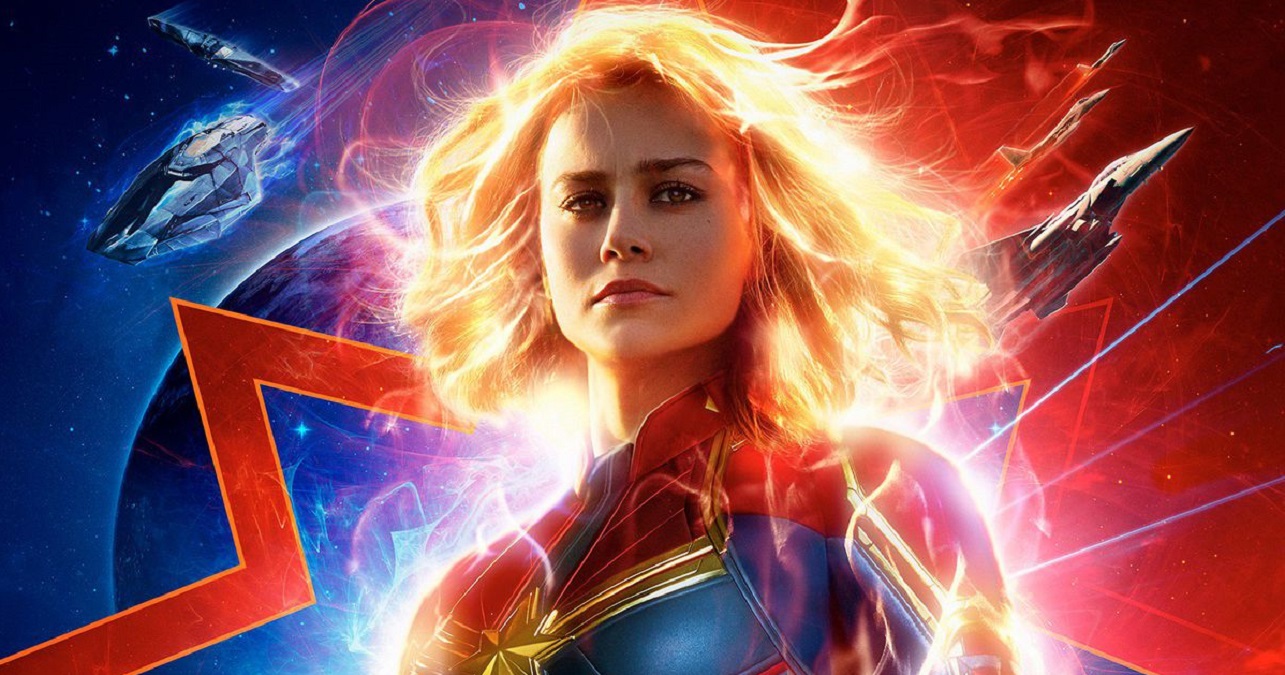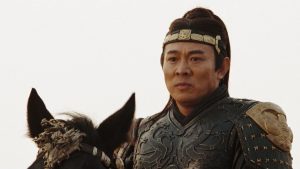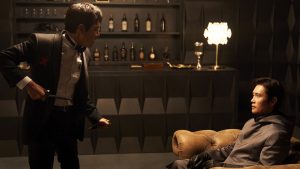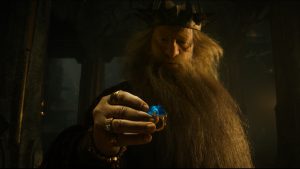
This article contains spoilers for the first Captain Marvel movie
“This can’t be right,” says a disembodied voice, over an image of an Air Force pilot, signaling to her wingman in an adjoining jet. The voice commands someone to go back further, this time to images of a little girl racing a go-cart. “Who is this person?” asks the voice, speaking for most of the viewers as well.
The confusion of the speaker, later revealed to be the Skrull Talos, comes from his expectation to see memories of Hala, the assumed homeworld of the Kree warrior Vers. He doesn’t realize that Vers was born on Earth as Carol Danvers. After Talos unlocks her memories, Carol recovers her identity and her full power, eventually becoming the superhero Captain Marvel.
For some, the decision to make Carol an amnesiac both hampered the performance of the energetic actor Brie Larson and gave her movie a confusing structure. But even with this narrative conceit, Captain Marvel presents a much more straightforward take on the character’s history. Furthermore, the MCU version of Carol Danvers greatly improves on her comic book counterpart by leaving out at least one awful story.
The Many Lives of Carol Danvers
Carol Danvers first appeared in 1968’s Captain Marvel #13, written by Roy Thomas and drawn by Frank Springer, but not as Captain Marvel. In that issue, the appellation belonged to the Kree warrior Mar-Vell, the first character in the Marvel Universe to use that title. Instead, Danvers was the head of security at NASA, a position she held because of her military training. She played a background role for a few issues until an explosion of Kree energy left her in a coma and pushed her to the background of the series.
In 1977, writer Gerry Conway and artist John Buscema woke Carol from her coma and gave her the same powers as Mar-Vell. Taking the name Ms. Marvel, Carol was reimagined as a feminist hero for the 70s, trading her military gig for a job as an editor for a women’s magazine. As Ms. Marvel, Carol teamed up with heroes across the universe, including Spider-Man, X-Men, and the Avengers.
In the years that followed, Carol had her powers augmented to become the energy-based galactic hero Binary. During the Operation Galactic Storm storyline in the 90s, she returned to her Captain Marvel power set and later took the name Warbird, a reflection of her role in the U.S. Military. A few years later, Carol reverted to the Ms. Marvel moniker to emphasize her superhero work, which apparently included capturing unregistered heroes during the Marvel Civil War.
It wasn’t until 2012 that Carol teamed with a resurrected Mar-Vell to stave off a Kree invasion. After Mar-Vell’s sacrifice, Carol recognized her role in a larger lineage and finally accepted the title Captain Marvel. In the Captain Marvel series written by Kelly Sue DeConnick, Carol integrated all of the parts of her past: her super-heroing, her military background, and her work with the X-Men and the Avengers.
Time, Crimes, and a Mistake with Ms. Marvel
The MCU version of Carol Danvers wisely avoids all of those shenanigans, winking at the character’s convoluted history with the name “Vers” she uses while an amnesiac Kree warrior, but going straight to the Captain Marvel name, and that’s not the only way the MCU improves upon the comic book version of Carol Danvers. It also does it by avoiding one of the worst storylines in Marvel history.
In Avengers #197 (1980), written by David Michelinie and penciled by Carmine Infantino, Ms. Marvel faints while visiting Scarlet Witch. Wanda takes Carol to the hospital, where they learn that Danvers is three months pregnant. Carol comes to term over a period of a few days, during which the Avengers spend their time battling the giant robot Red Ronin (designed to fight Godzilla, back when the King of the Monsters was a canonical part of the Marvel Universe).
Carol gives birth in Avengers #200, and the child quickly grows into a man who introduces himself as Marcus Immortus. If that name sounds familiar to MCU fans, it’s because Immortus is one of the Variants of Kang the Conqueror, seen in the first post-credit scene of Ant-Man and the Wasp: Quantumania. Immortus’s son Marcus used time-travel shenanigans to impregnate Carol with himself, entering the 20th century by exiting her womb.
Even more gross and confusing is what happens next, as Carol declares her love for her son/boyfriend and leaves with him to Limbo. Yes, that’s right. The Avengers celebrated 200 issues by having Marvel’s most openly feminist superhero fall in love with her abuser. But although Michelinie writes these issues, the Marcus/Carol plot is the work of Jim Shooter, Marvel’s editor-in-chief at the time, known for taking an active role in storylines published under his watch.
Still, one has to wonder if Michelinie does not share some blame, especially for the conversation between Carol and Wanda in Avengers #197. Upon hearing about Wanda’s plans to have children, Carol chastises her for giving up the superhero life to be saddled with the responsibilities of motherhood. “Surely, you find that more ‘fulfilling’ than any silly stereotype of having a baby,” she says of Wanda’s heroic career.
Thankfully, Chris Claremont acknowledged all of the ugliness of that storyline when he revisited in Avengers Annual #10 the following year. Penciled by Michael Golden, Avengers Annual #10 opens with Spider-Woman rescuing an unconscious Carol from drowning and bringing her to Avengers Mansion. Carol has been attacked by Rogue (in her first appearance) at the behest of Mystique and the Brotherhood of Evil Mutants.
After Professor X restores her memories, Carol reveals that she was under Marcus’s control when she left with him. She chastises the Avengers for not realizing the change in her behavior and doing nothing to stop the son of a supervillain from taking her away. “That was your mistake for which I paid the price,” she tells Captain America and the others. “My mistake was trusting you.”
A Marvelous Improvement
The Carol Danvers of the MCU certainly has her troubles, and the first movie does follow her breaking from her controlling friend Yon-Rogg, complete with a “Debate Me!” finale. However, even when laboring under the delusion of being “Vers,” Carol never gets debased as she does in the comics.
As demonstrated by the playful smirk that Larson gives her, Captain Marvel is the strongest superhero in the MCU, and she knows it. This performance is in keeping with some of Carol’s best stories from the comics, her early Ms. Marvel adventures by Conway, her amazing destruction of the Brood armada as Binary, or leading the Carol Corps. in DeConnick’s Captain Marvel run. The MCU version of Captain Marvel highlights all of the best parts of the character and helps us forget her awful retrograde low points.
The post Whether You Like It or Not, the MCU Changed Captain Marvel for the Better appeared first on Den of Geek.






